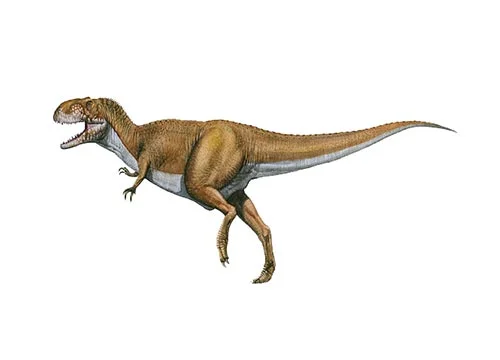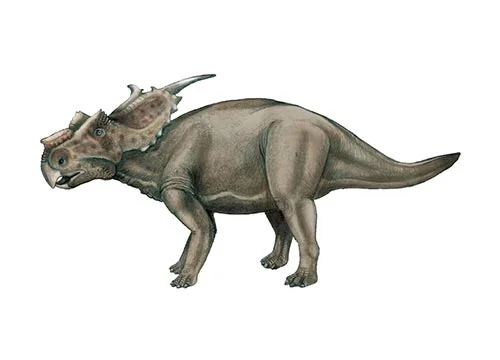Gastonia (Gaston’s thing)

Gas-toe-nee-ah
James Kirkland and Robert Gaston – 1998
Herbivore
Estimated 4-5 meters long
Armoured Dinosaur
G. burgei (type). G. lorriemcwhinneyae
USA, Utah – Cedar Mountain Formation
Early Cretaceous, 125 million years ago
Gastonia Facts
Gastonia, meaning “Gaston’s thing,” is a genus of ankylosaurid dinosaur that lived during the Early Cretaceous period, around 125 million years ago. Its fossils were first discovered in Utah, United States, in 1996 and the genus was named and described by paleontologists James Kirkland and Robert Gaston in 1998.
Gastonia was a medium-sized ankylosaurid, measuring around 4 to 5 meters (13 to 16 feet) in length and weighing approximately 450 to 900 kilograms (1,000 to 2,000 pounds). It was heavily armored, with a thick bony plate covering its entire back, as well as smaller plates and spikes on its sides and tail. It also had a club-like tail, which was used as a defensive weapon to ward off predators.
One of the most distinctive features of Gastonia is its armor. The bony plates on its back were arranged in rows and were heavily fused to each other and to its backbone, providing a rigid shield against predators. The spikes and plates on its sides and tail were also fused together, creating a flexible yet formidable defense system.
Gastonia also had a beak-like mouth with numerous small teeth, which were used to grind up tough plant material. Its wide, muscular jaws were capable of generating a strong bite force, allowing it to efficiently break down even the toughest vegetation.
Based on the structure of its bones, paleontologists believe that Gastonia was a slow-moving animal, relying on its armor and defensive weaponry to protect itself from predators. Its robust body and powerful jaws suggest that it was well-suited to the task of processing tough plant material and extracting nutrients from it.
Gastonia is an important dinosaur for paleontologists because it provides valuable insights into the evolution and adaptations of ankylosaurid dinosaurs. Its unique combination of armor and weaponry helps to fill in gaps in our understanding of how ankylosaurids defended themselves against predators and thrived in their ancient ecosystems.
In conclusion, Gastonia is a fascinating dinosaur that helps us to better understand the diversity and adaptations of ankylosaurid dinosaurs during the Early Cretaceous period. Its heavily armored body and defensive weaponry set it apart from other ankylosaurids, and its powerful jaws and slow-moving nature likely helped it to efficiently process tough plant material. As more fossils are discovered and studied, we are likely to learn even more about this enigmatic dinosaur and its place in the evolutionary history of ankylosaurids.



